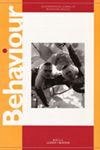自切爪对小龙虾(Cambarus polypilosus)的挖掘能力没有影响
IF 1
4区 生物学
Q4 BEHAVIORAL SCIENCES
引用次数: 0
摘要
自体切开术是一种自我诱导的身体部位的丧失,在动物身上已经进化了至少9次。从历史上看,自残被认为是一种对抗捕食者的反应,可以增加动物逃跑和生存的机会。然而,自体切开术也可以提供一些好处,如减少受伤的成本,提高繁殖成功率,并允许逃脱非掠食性陷阱。十足甲壳类动物,如小龙虾,有高达50%的个体可能有自动切除的附属物。在本研究中,我们研究了爪自切对山毛小龙虾(Cambarus polypilosus)挖掘行为的影响。我们的研究结果表明,无论是单爪还是双爪自动化,对挖掘都没有影响。此外,我们证明了C. polypilosus的爪子是性别单态的,这在甲壳类动物中是不常见的。本文章由计算机程序翻译,如有差异,请以英文原文为准。
Claw autotomy does not influence digging ability in the Hillbilly Hairy Crayfish, Cambarus polypilosus
Abstract Autotomy is the self-induced loss of a body part, which has evolved in animals at least nine times. Historically, autotomy has been seen as an anti-predator response that increases an animal’s chances of escape and survival. However, autotomy can also provide benefits such as reducing the cost of injury, increasing reproductive success, and allowing escape from non-predatory entrapments. One group of animals that has a high occurrence of autotomy are decapod crustaceans, such as crayfishes, where up to 50% of individuals may have autotomized appendages. In the current study, we investigate the effect of claw autotomy on the digging behaviour in the Hillbilly Hairy Crayfish, Cambarus polypilosus . Our results demonstrate that there was no influence on digging regardless of whether one or two claws were autotomized. Further, we demonstrate that the claws of C. polypilosus are sexually monomorphic, which is unusual among crustaceans.
求助全文
通过发布文献求助,成功后即可免费获取论文全文。
去求助
来源期刊

Behaviour
生物-动物学
CiteScore
1.80
自引率
7.70%
发文量
44
审稿时长
3 months
期刊介绍:
Behaviour is interested in all aspects of animal (including human) behaviour, from ecology and physiology to learning, cognition, and neuroscience. Evolutionary approaches, which concern themselves with the advantages of behaviour or capacities for the organism and its reproduction, receive much attention both at a theoretical level and as it relates to specific behavior.
 求助内容:
求助内容: 应助结果提醒方式:
应助结果提醒方式:


